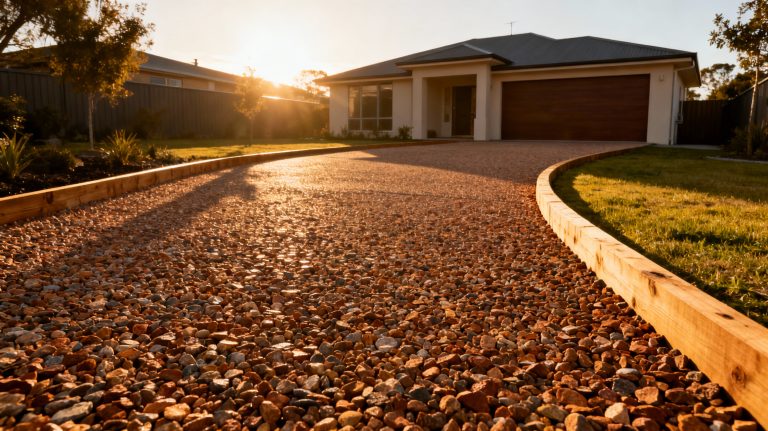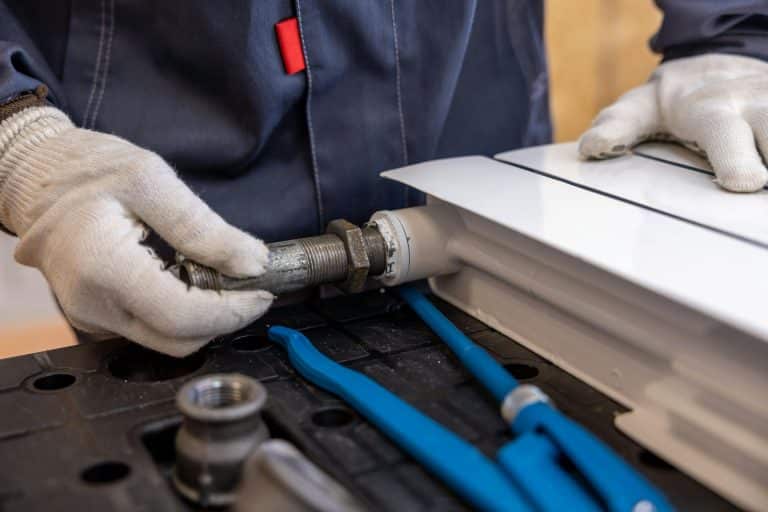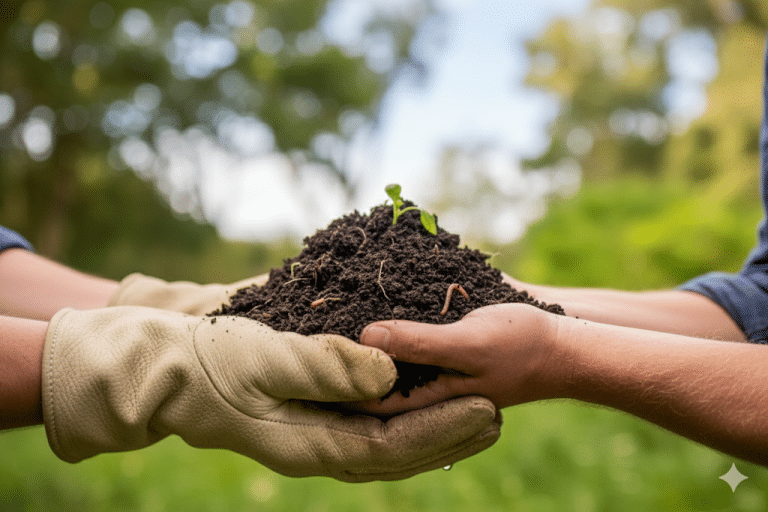You can get a solid, good looking, driveable surface without emptying your savings especially if you keep it simple and stage it smartly. Tonight, do one thing: measure your space (length × width) and write down the square footage. That number unlocks real costs when you call suppliers tomorrow.
Right now you might be staring at ruts after the rain, tires sinking just enough to annoy you, and a quote on the counter that made your stomach drop. You’re not crazy driveways got expensive. Let’s build one that fits your budget and your life.
The short list: truly cheap driveway materials
- Gravel (crushed stone): $1–$3 per sq ft installed DIY; material typically $30–$60 per ton. For a 600 sq ft driveway, that’s about $600–$1,800 in most areas.
- Crushed shell: $0.50–$4 per sq ft. Very low entry cost where available, but expect periodic top ups as it disperses.
- Tar and chip (chip seal): $1–$5 per sq ft. Grippy and low maintenance, but limited DIY and not great with snowplows.
- Also worth asking about: recycled asphalt millings ($15–$25 per ton). It self binds in sun and can feel like a budget tar and chip.
Choose by how you’ll use it, not by the prettiest photo
If your goal is the longest lasting cheap driveway, gravel wins nine times out of ten. Shells are the lowest ticket in, but they scatter and need replenishment. Chip seal rides in the middle great traction, no sealing, but you’ll likely hire it out and snow removal can be tricky.
Quick confusion clearer
“Cheapest” can mean the lowest upfront or the lowest over 10 years. To separate them, ask yourself: do you want the smallest check now (shell) or the fewest interventions later (gravel)?
The $600–$1,800 weekend gravel plan (the one that works)
This is the budget driveway most people actually keep. It’s also the most DIY friendly.
First move: prep and drain. Scrape high spots, fill obvious holes, and aim the surface to fall away from the house about 1-2% (roughly 1-2 inches of drop per 10 feet). Roll out landscape fabric to block weeds and keep rock from sinking. What you’ll notice: after the first rain (or hose test) water runs off instead of pooling within a day you’ll see fewer puddles.
Second move: build a base. Spread 3-4 inches of “crusher run,” “3/4 inch minus,” or similar stone with fines. Compact it rent a plate compactor if you can, or go slow with a hand tamper and car tires. What you’ll notice: you can park on it the same day, and it’ll feel firmer each time you drive over it for a week.
Finish layer: add 1-2 inches of clean stone (#57, 3/8″–3/4″). Rake a slight crown (higher in the middle) so water sheds to the sides. Edging helps if you can afford it. If not, keep the edges feathered rather than abrupt.
Progress looks like this:
- Immediate: footprints barely dent the surface; your tires don’t sink when you turn.
- In 5-7 days: after a couple rains and regular use, ruts aren’t deepening and the top “crust” feels tighter.
- By two weeks: the surface has locked in; you’re just kicking a few loose stones to the edges now and then.
Maintenance is simple: rake out low spots as they appear and add an inch of fresh gravel to high wear areas every few years. Done right, a gravel driveway can outlast you seriously.
Under $500 tactics that actually move the needle
- Build in phases. Fabric + base this month, top layer later. A good base is already driveable.
- Buy smarter. Delivery can be 30-50% of your cost. A single 10-12 ton load is cheaper per ton than two small loads. Coordinate with a neighbor if you can.
- Call quarries directly. Ask for “crusher run” pricing and delivery schedule often far lower than big box bagged rock.
- Ask about recycled materials. Asphalt millings ($15–$25/ton) and crushed concrete can be excellent budget bases.
- Pick the right size. “Minus” stone (with fines) compacts; skip decorative river rock that never locks up.
- Keep the edges cheap. Timber, pressure treated 2x6s, or even a shallow soil berm beats nothing. You can upgrade edging later.
- Avoid the weed headache. The fabric you install now saves years of frustration.
- If codes are strict where you live, note that gravel and shell are permeable and often permit friendly. Always check local rules.
Why this works
Cheap driveways fail for two reasons: no base and bad drainage. Fines in “minus” gravel act like tiny wedges that lock the bigger stones together when compacted, creating a stable layer. The fabric stops your rock from sinking into soft soil.
And that gentle crown? It’s the cheapest insurance you can buy water is your enemy, so you give it somewhere to go. We see most budget driveway problems traced back to skipping one of those three.
Shell driveways: when they make sense
If you’re coastal or can source shells cheaply, they’re the lowest entry price and they look intentionally “beachy.” They also grip well under tires.
The trade off is movement shells migrate and break down. Expect to rake them back from the lawn, and plan on top ups every 2-3 years in high traffic spots. They’re not a barefoot paradise and they’re unfriendly to snowblowers.
If you love the look, install them like gravel (fabric, base, then shells) and you’ll get the best version of a shell drive.
Tar and chip in plain English
Think of chip seal as hot asphalt sprayed on a sound base, then immediately covered with stone chips that get pressed in. It’s grippy, sheds water, and you don’t have to seal it. Typical life is 8-12 years before you resurface.
The catch: timing matters, so most folks hire it out, and snowplows can scrape chips. If DIY is your goal, asphalt millings are the cousin worth a look they soften in heat and bind under compaction, giving you a semi bound surface at gravel prices.
A few money comparisons to hold onto: for the same 600 sq ft, concrete often runs $2,400–$4,800 and asphalt $1,800–$4,200. You can build and refresh a great gravel drive for decades for the price of one concrete pour.
What to do tomorrow morning
- Call two or three local quarries or landscape suppliers. Ask: price per ton delivered for crusher run, clean #57, and asphalt millings. Give them your square footage; they’ll estimate tonnage.
- Ask about truck access and the smallest dump they can make along your layout fewer wheelbarrow trips, less backache.
- Pick a weekend, reserve a plate compactor, and line up an edging option if your budget allows.
You don’t need to win the driveway forever in one swipe. The one you can build now the one that keeps your shoes out of the mud and your car off the street is a real upgrade. The “good enough” you install well is better than the “perfect” you postpone.
Closing help, if you want a sanity check
Whether you DIY or call us, you deserve clear answers. We can walk your layout, check slope and soil, and right size the base so you’re not overbuying rock. We also bring a plate compactor and place test patches with different stones so you can feel the difference before you commit.
No pressure either way, you’ll leave with a simple plan and a number that won’t make your coffee come back up.













